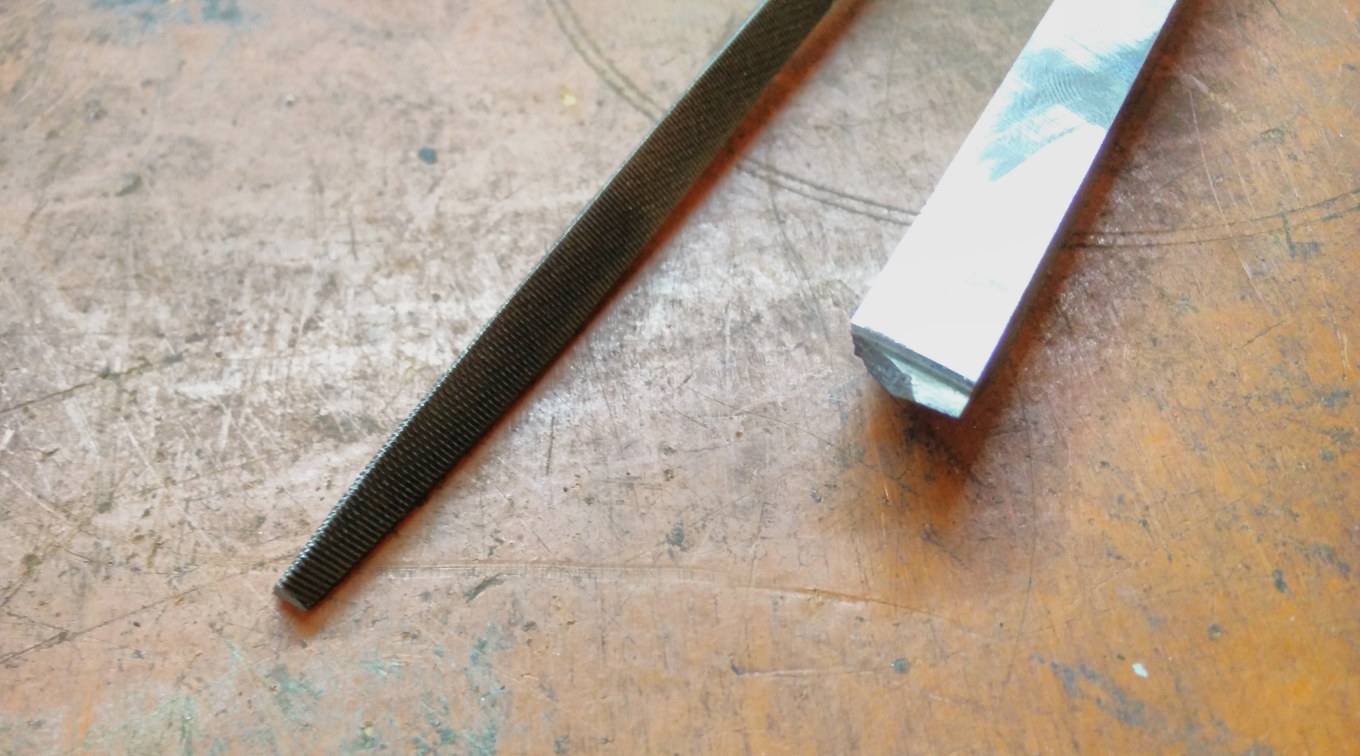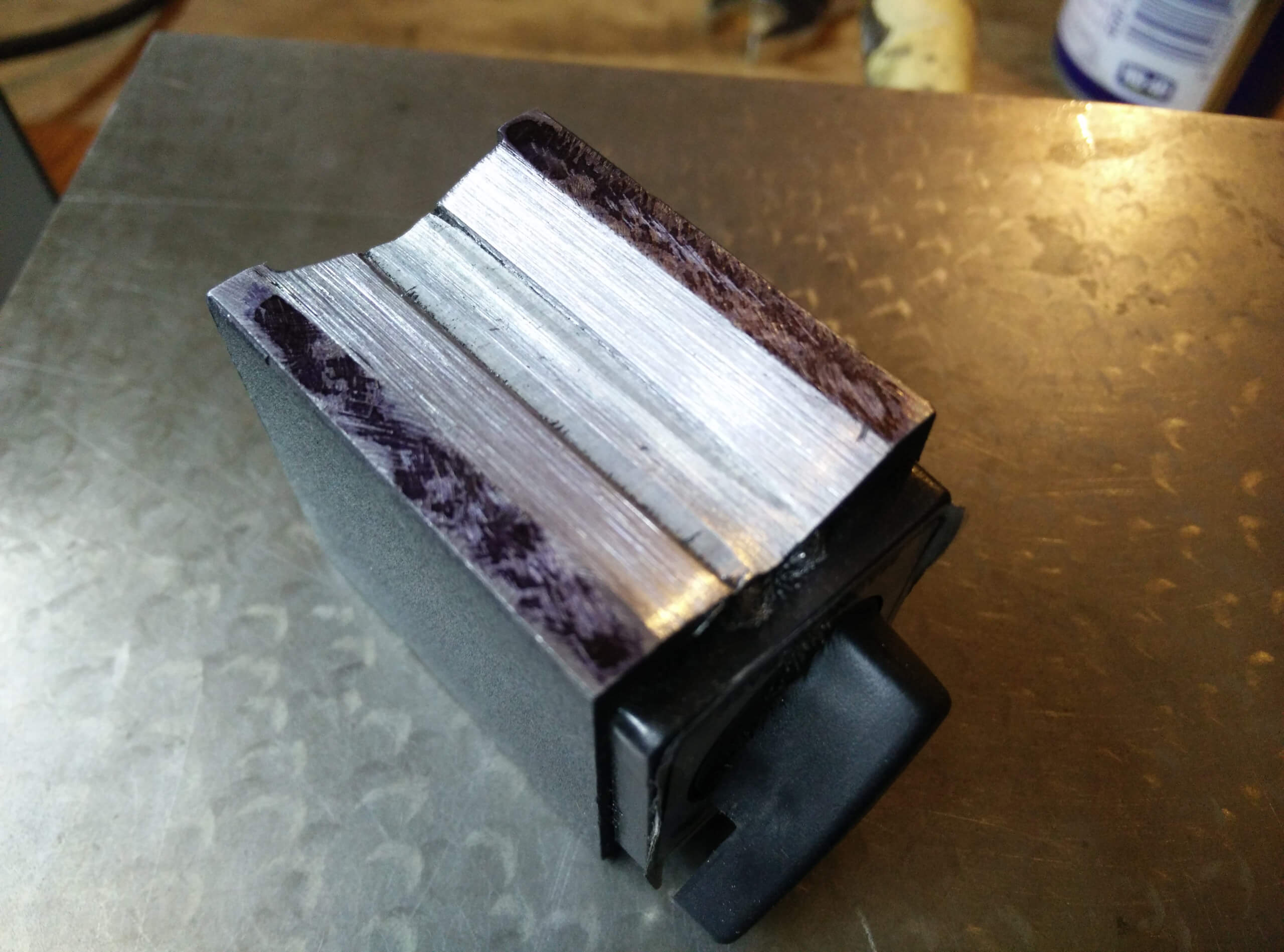Scraping without a scraper
In between watching the rain and emptying all the shmoo out of my air compressor (long overdue), I decided to try my hand at some impromptu scraping this weekend. Matters were complicated somewhat due to me not owning a scraping tool, but I worked with what I have to make what I think are some satisfctory results. This post will be a short log of what went down and will hopefully demonstrate that one can achieve reasonably good (i.e. flat) results without having a real scraper.
I bought a shitty magbase indicator holder off eBay a while back (header image). It's served me well enough, but the major pain point is the base - it's not even close to being flat. This makes the indicator wobble if you knock it, and reduces magnetic stiction significantly due to the magnetic field having to pass through air which sucks at transmitting magnetic flux. After the scraping/flattening process described below, the magbase holds a lot better and without any perceptible wobble and is finally a usable, useful bit of shop equipment.
I've been watching Stefan Gotteswinter's series on improving an import angle plate which was a great help in learning the general techniques of scraping a surface in. Stefan uses an electric scraper and a posh granite surface plate whereas I have a cast iron surface plate, a file and a lathe toolbit. YMMV but if you're on a budget, I think you can get pretty good results without eye wateringly expensive equipment.

Scraping started with a small triangular file. This will make most sensible machinists cringe, but it works quite well and removes material more quickly than a scraping tool which sped up the initial flattening significantly. After that, I moved on to using a lathe toolbit that had been ground into some kind of external grooving tool before I got my hands on it. I freshened the edge up and went to town with that in leu of a proper scraping tool. In hindsight, I should've ground the edge into a crescent instead of leaving it flat but hey, it's all part of the learning experience.
After a bunch of print/scrape/deburr/print cycles, I ended up with a pretty consistent contact pattern. The surface is still full of file marks despite my best efforts to sand them down, but the most important thing is that it's a uniform surface. See what you think:

So it turns out that scraping is one of those pleasantly satisfying manual processes, and it gave me an excuse to break out the seldom used surface plate. I'd definitely like to get better at scraping and get the right tools to do it with in the future, my only problem now is finding something worth scraping in.

